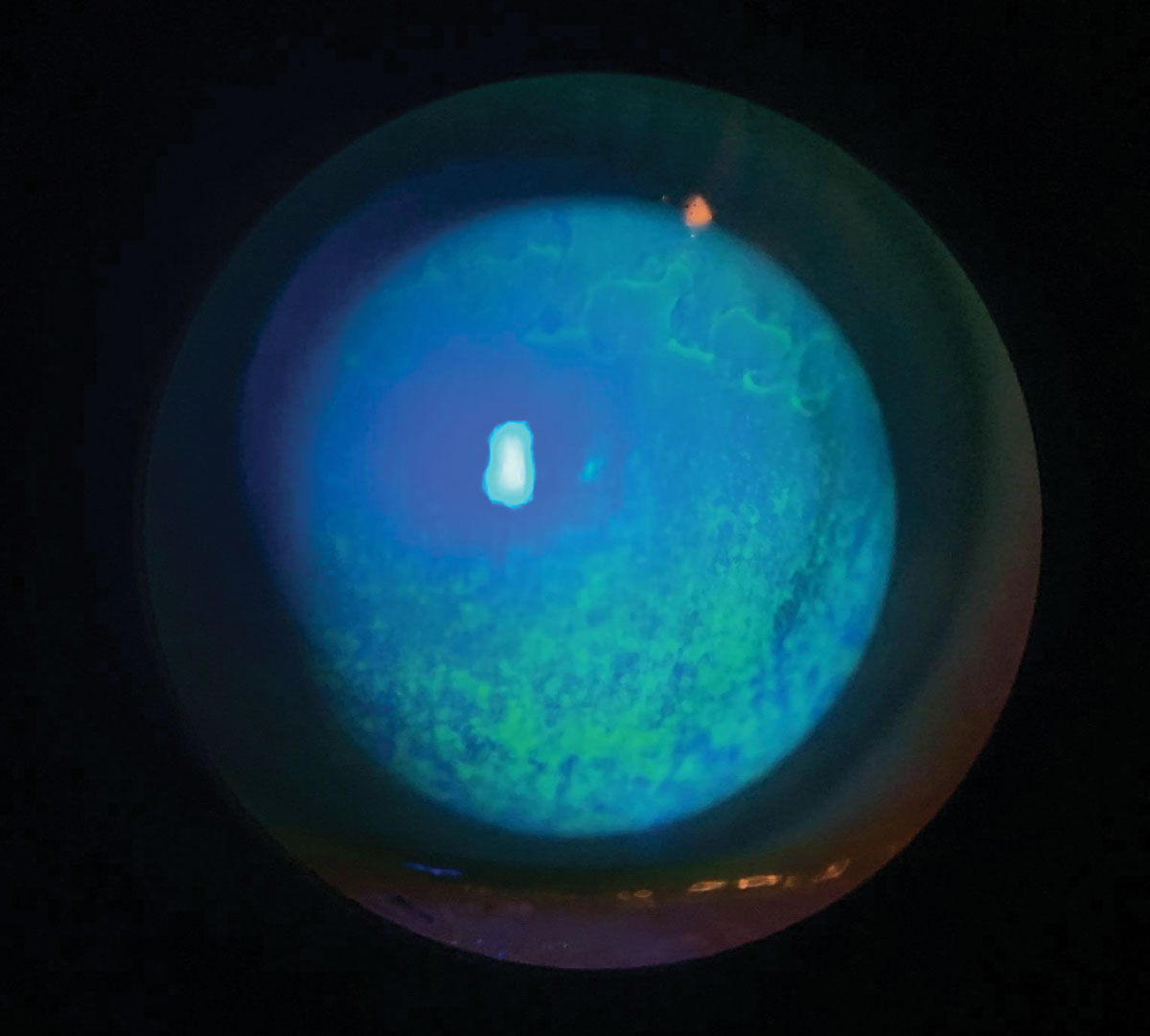 |
|
Persistent pain and eyestrain arising from dry eye can hamper work ability and motivation, a new study finds. Photo: Candice Tolud, OD. Click image to enlarge. |
In one new study coming from a Dutch population, researchers aimed to clarify just how living with dry eye disease (DED) impacts different job facets. The condition was compared with job concerns to establish if any relationship existed between the disease and unemployment, absenteeism and worry of job loss.
Included were 71,067 subjects assessed from the Dutch population–based Lifelines cohort, using the Women’s Health study questionnaire and single-item questions, and this population was screened for all three aforementioned job-related factors. A total of 32,475 participants were assessed for work functioning using a survey instrument called the Work Role Functioning Questionnaire 2.0, which assesses the impact of health conditions on job performance.
Researchers found that 8.3% of subjects had dry eye disease and had greater work function impairment when compared with those without DED. Dry eye showed risk of impaired work comparable to that of rheumatoid arthritis. Those with the highly symptomatic version of the disease showed a much greater percentage of work impairment at 59.1%, comparable to depression. Undiagnosed subjects experienced greater impaired work with increasing symptoms than those who were diagnosed. Dry eye remained linked to above average absenteeism and increased worry of job loss, but not unemployment, after correcting for comorbidities. Some of the key findings are as follows:
| Prevalence in controls (no dry eye) | Prevalence in dry eye subjects | Prevalence in highly symptomatic dry eye subjects |
Unemployed (n=71,067) | 4.2% | 5.2% | 6.3% |
Absenteeism (n=61,521) | 6.4% | 8.1% | 10.1% |
Afraid of job loss (n=53,224) | 8.1% | 10.5% | 12.8% |
The researchers explain in their paper for Ocular Surface that several different mechanisms may be at fault for DED’s impact on work. One likely explanation is the experience of pain, as the researchers point out that one prior study found dry eye subjects to be 30 times more likely to experience ocular pain than controls. Pain would resultingly disturb work ability and motivation, while chronic pain has already been found to affect work.
Another likelihood is that of impaired visual function experienced by this subset of patients that could result in impaired function. Of note, increasing screen use in the work environment may particularly exacerbate the effects of dry eye, as DED has been linked strongly to screen usage. This is due to reduced frequency of blinking and increased number of incomplete blinks, leading to increased eye surface evaporation and driving the circle of DED.
Those with highly symptomatic features of the disease and who were previously undiagnosed had even lower work functioning. The researchers attribute this finding to the possibility that receiving a formal diagnosis could be important to improve work functioning of this population. They may, as the authors posit, “struggle with finding strategies that could improve their work functioning. In addition, they may lack work related understanding and facilitation by their managers and peers.” Finally, use of artificial tears by itself was not protective against impaired work function.
As shown by this study, dry eye clearly can be severe enough to impede regular workflow for individuals, especially undiagnosed ones. For this reason, the researchers propose that “clinicians, employers and the general public should be better informed about dry eye’s impact on work functioning, and it should be emphasized that dry eye is a serious disorder that requires timely diagnosis and treatment.”
Morthen MK, Magno MS, Utheim TP, Hammond CJ, Vehof J. The work-related burden of dry eye. Ocular Surface. 2023. [Epub ahead of print]. |

